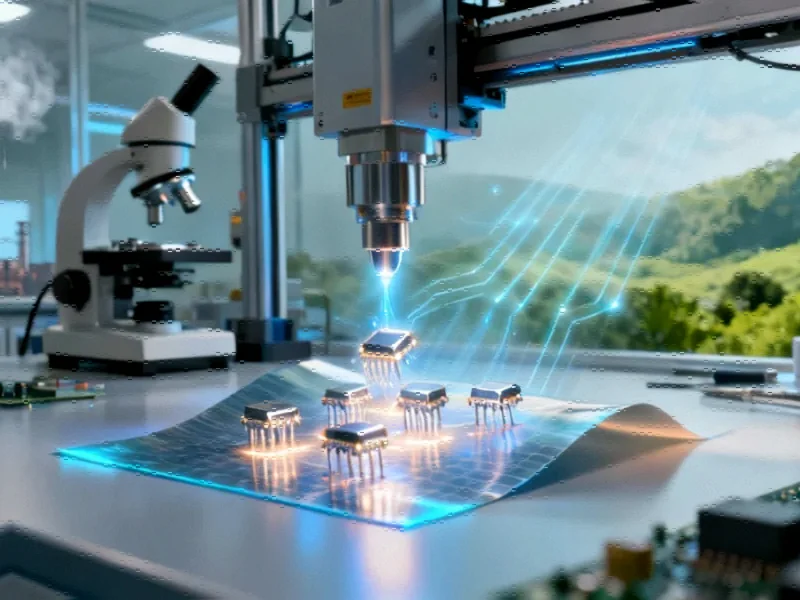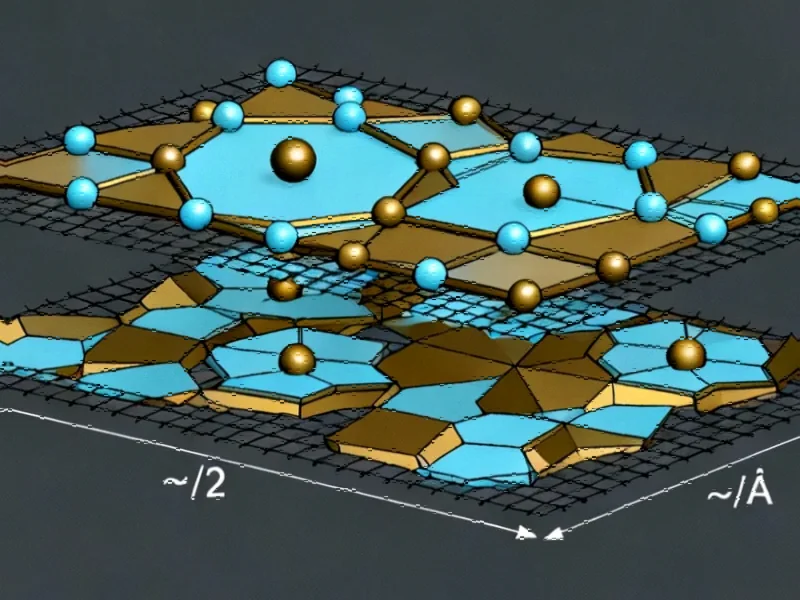Breakthrough in Sustainable Electronics Production
Duke University electrical engineers have unveiled a groundbreaking printing technique capable of producing fully functional and recyclable electronics at sub-micrometer scales. This innovation represents a potential paradigm shift for the $150+ billion electronic display industry, offering both environmental benefits and new opportunities for U.S. manufacturing to compete in a sector currently dominated by overseas production.
The research, published October 17 in Nature Electronics, demonstrates carbon-based transistors that match industry performance standards while being completely recyclable. “If we want to seriously increase U.S.-based manufacturing in areas dominated by global competitors, we need transformational technologies,” stated Aaron Franklin, the Edmund T. Pratt, Jr. Distinguished Professor of Electrical & Computer Engineering and Chemistry at Duke.
Addressing Environmental Challenges in Electronics
The environmental impact of traditional display manufacturing is substantial, with vacuum-based processing generating significant greenhouse gas emissions and consuming enormous energy. Compounding the problem, United Nations estimates indicate that less than 25% of the millions of pounds of electronics discarded annually are recycled.
Franklin’s laboratory previously developed the world’s first fully recyclable printed electronics several years ago, but that technology was limited by feature sizes larger than 10 micrometers. The new approach overcomes this limitation through collaboration with Hummink Technologies and their innovative printing system.
High-Precision Capillary Printing Technology
The “high precision capillary printing” technique leverages competing surface energies to extract minute amounts of ink from tiny pipettes. This process, similar to how paper towels absorb liquid through narrow fiber spaces, enables unprecedented precision in printed electronics.
“We sent Hummink some of our inks and had some promising results,” Franklin explained. “But it wasn’t until we got one of their printers here at Duke that my group could harness its real potential.”
The researchers utilized three carbon-based inks—carbon nanotubes, graphene, and nanocellulose—that can be printed onto various substrates including glass, silicon, paper, and other environmentally friendly surfaces. These specially formulated inks, adapted from Franklin’s earlier research, feature modified fluid properties optimized for the Hummink printers.
Performance and Applications
The demonstration achieved features tens of micrometers long with consistent submicrometer gaps between them. These precisely controlled gaps form the channel length of carbon-based thin-film transistors (TFTs), with smaller dimensions translating to enhanced electrical performance. These transistors serve as the backbone for controlling pixels in all flat-panel displays.
While this technology won’t replace high-performance silicon computer chips, Franklin notes its potential in specific markets. “These types of fabrication approaches will never replace silicon-based, high-performance computer chips, but there are other markets where we think they could be competitive—and even transformative,” he said.
Display Industry Implications
Every digital display contains microscopic thin-film transistor arrays controlling individual pixels. OLED displays typically require at least two transistors per pixel with higher current demands, while LCD displays need only one. Previous research demonstrated printed, recyclable transistors driving LCD display pixels, and the new submicrometer TFTs approach the performance needed for OLED applications.
This breakthrough printing method represents one of several related innovations emerging in electronics manufacturing. As industry developments continue to evolve, sustainable manufacturing approaches are gaining increased attention.
Broader Technology Context
The timing of this advancement coincides with other significant market trends in consumer electronics. Meanwhile, legal and regulatory landscapes are shifting, as evidenced by recent technology disputes and increasing scrutiny of digital industries.
Financial and regulatory environments are also adapting to new technologies, with authorities like the UK tax authority ramping up enforcement in emerging sectors. Similarly, financial investigations in technology companies highlight the growing complexity of the industry landscape.
Future Prospects and Challenges
Franklin believes digital displays represent the most promising application for this technology. Beyond complete recyclability, the printing process requires substantially less energy and generates fewer greenhouse gas emissions compared to conventional TFT manufacturing methods.
“Displays being fabricated with something similar to this technique is the most feasible large-scale application I’ve ever had come out of my lab,” Franklin stated. “The only real obstacle, to me, is getting sufficient investment and interest in addressing the remaining obstacles to realizing the considerable potential.”
Despite the promising results, funding challenges remain. “Unfortunately, the National Science Foundation program that we were pursuing funding from to continue working on this, called the Future Manufacturing program, was cut earlier this year,” Franklin revealed. “But we’re hoping to find a fit in a different program in the near future.”
The combination of environmental benefits, competitive performance, and manufacturing scalability positions this technology as a potential game-changer for the display industry and sustainable electronics production worldwide.
This article aggregates information from publicly available sources. All trademarks and copyrights belong to their respective owners.
Note: Featured image is for illustrative purposes only and does not represent any specific product, service, or entity mentioned in this article.


